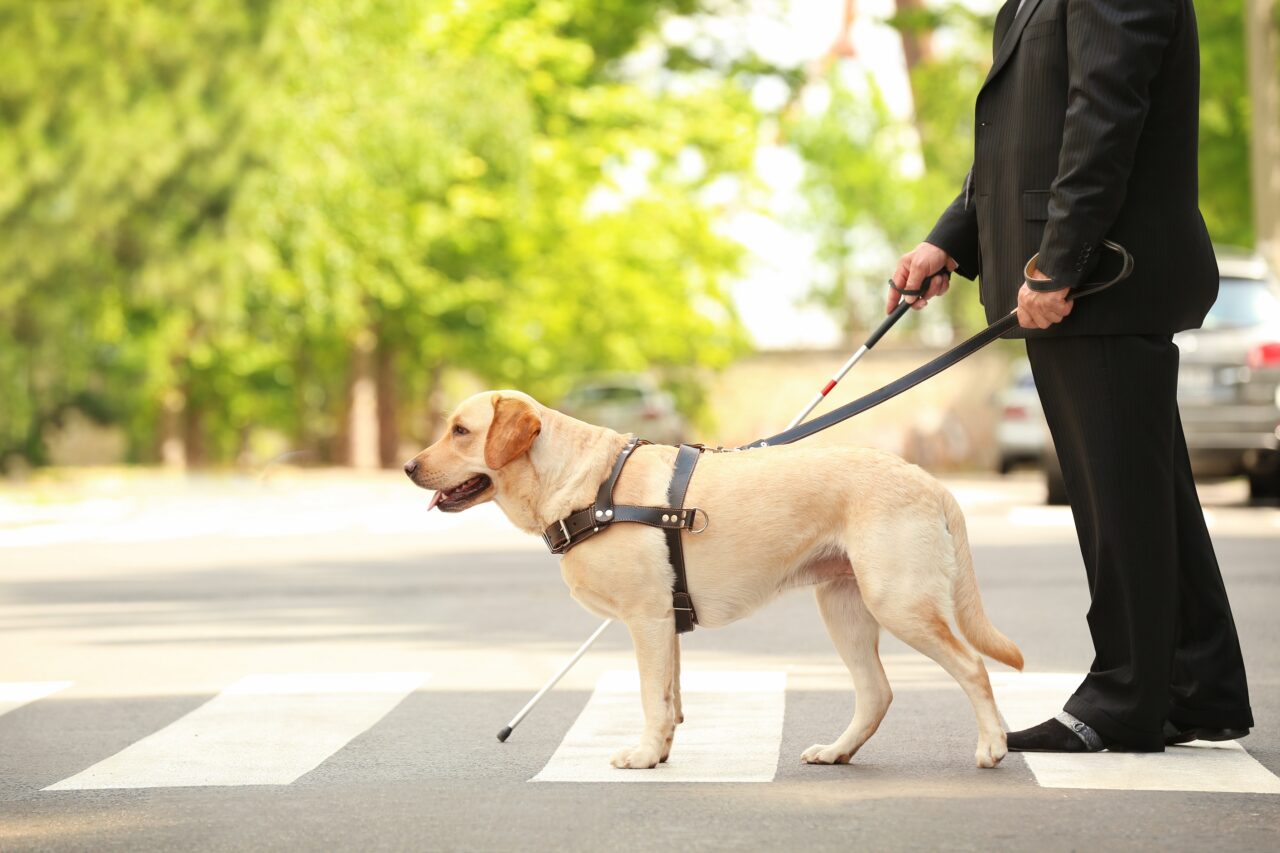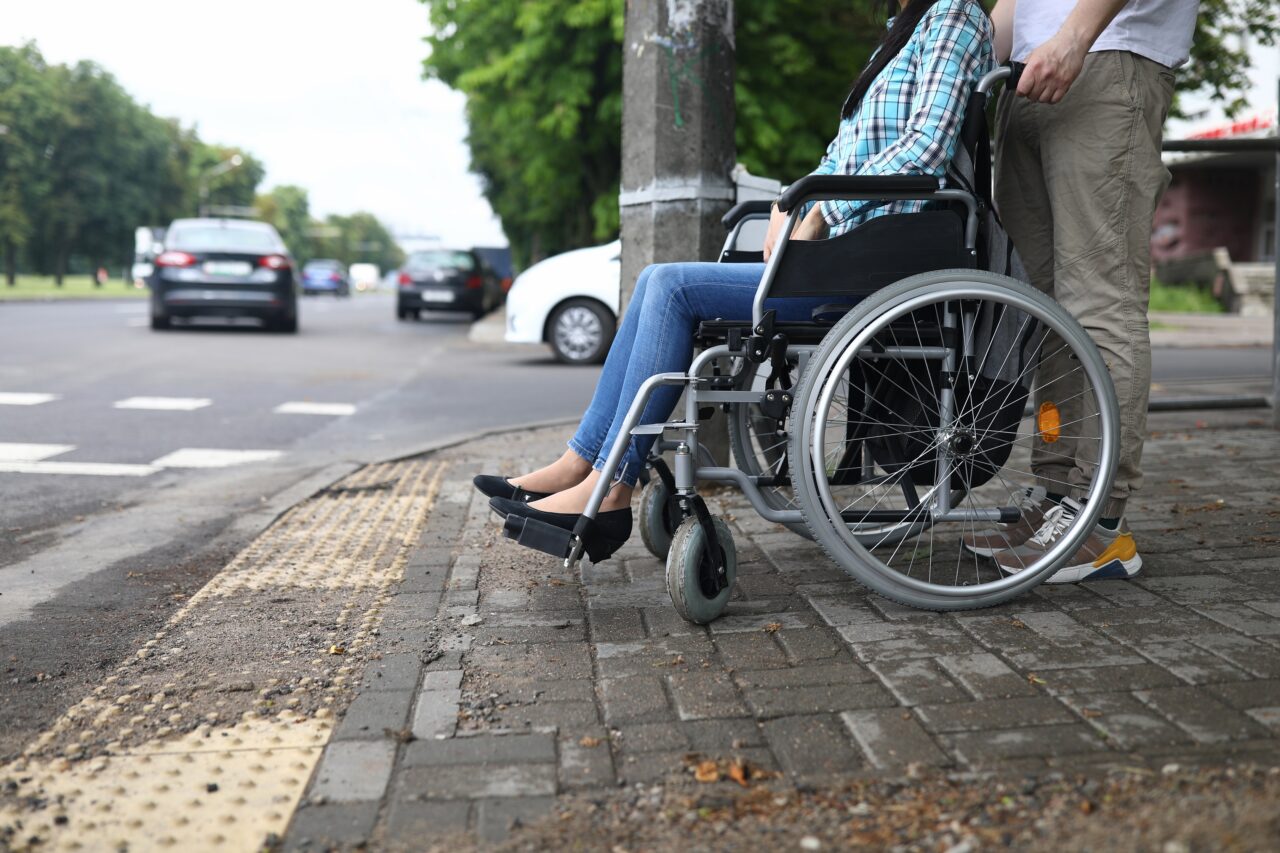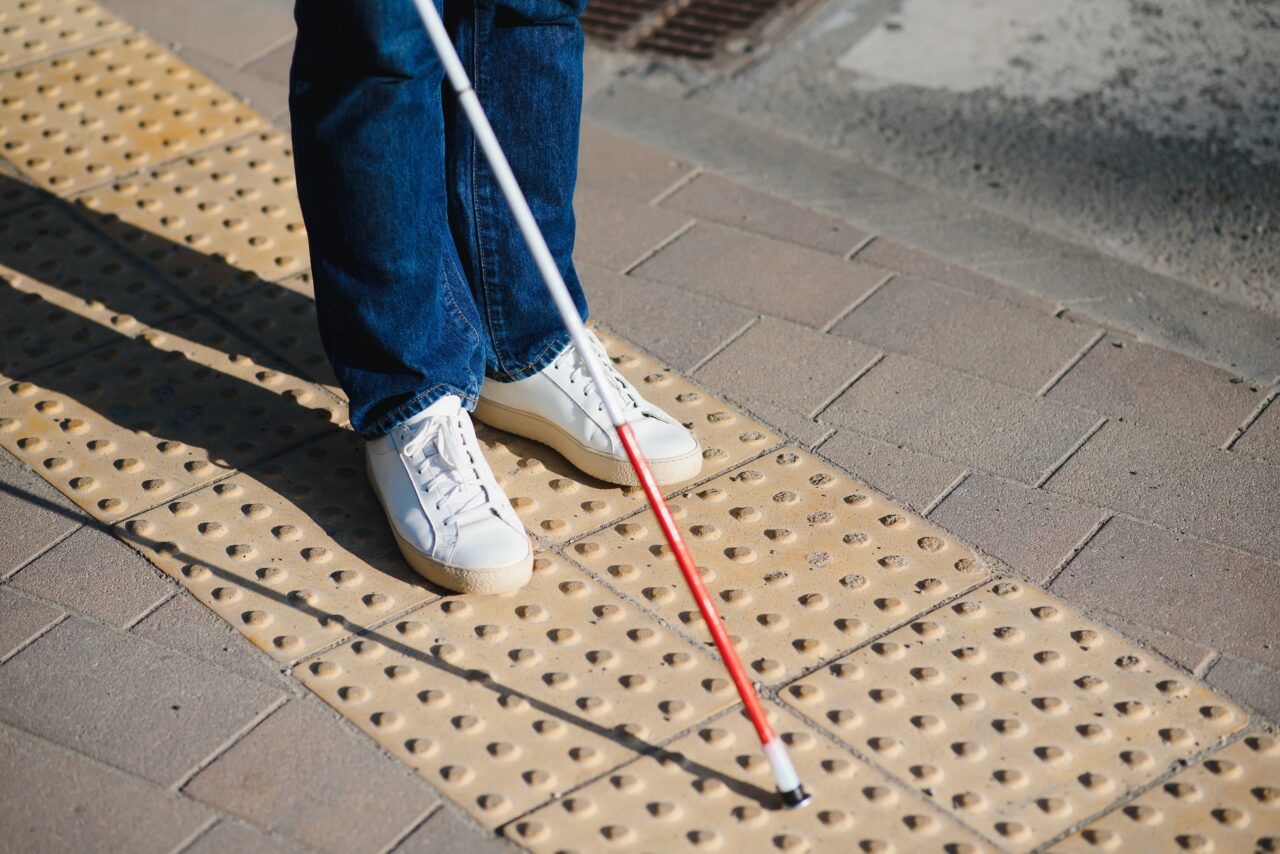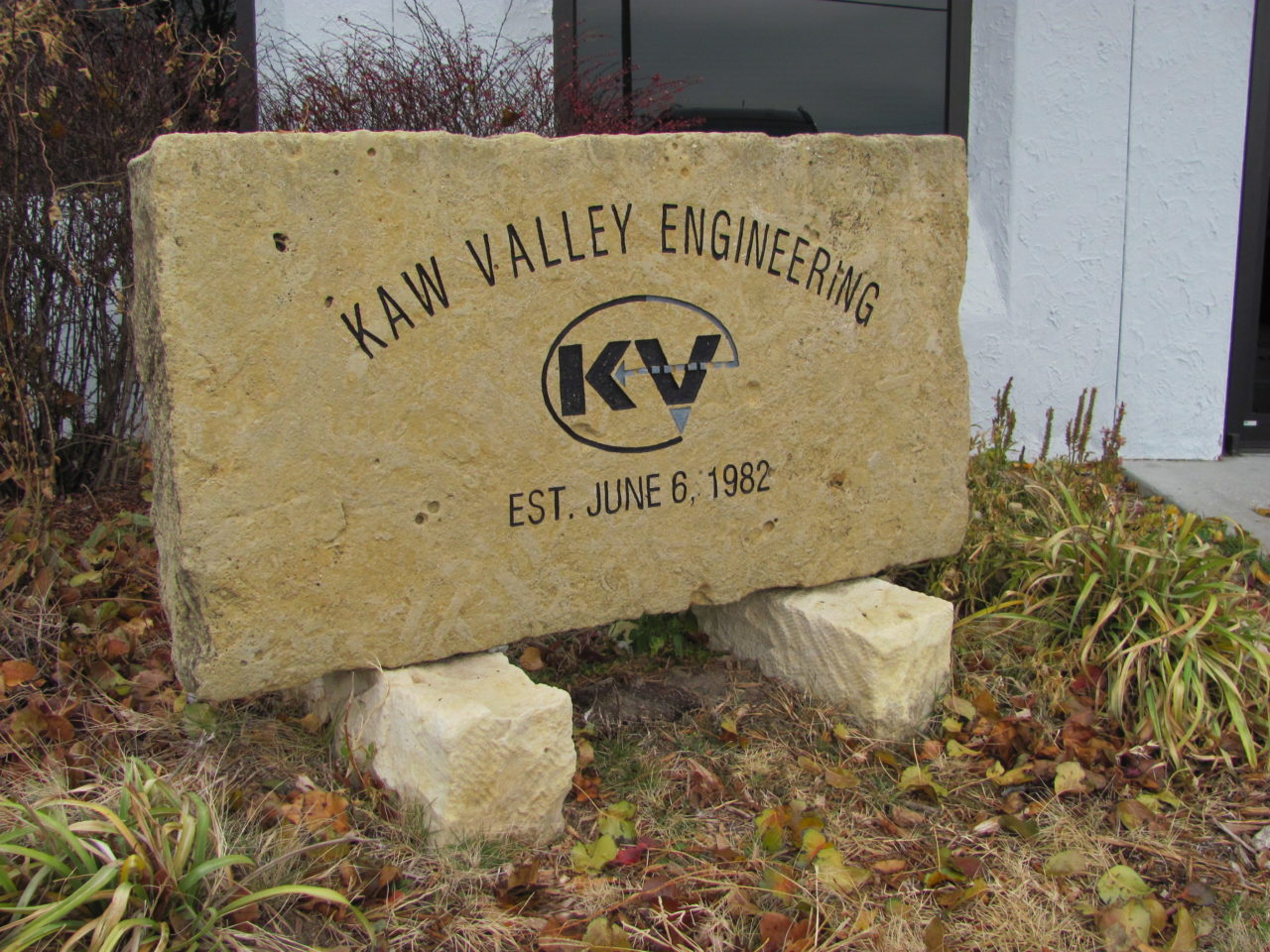Why are there bumps in the sidewalk at crosswalks?
In the realm of civil engineering, the pursuit of safety and inclusivity is a paramount concern. It is the discipline of civil planning that shapes the physical environment we live in. As professionals in this field, it is our responsibility to ensure that our designs are inclusive and accessible to all members of the community. To accomplish this, civil engineers have a plethora of tools at their disposal to ensure the safety and independence of all community members are protected. One tool is the Truncated Domes found on sidewalks at crosswalks.
Truncated domes are a tactile warning tool the alert pedestrians when they are moving into an area with vehicle traffic. Areas where this can occur are crosswalks – moving from the sidewalk to the road, and near the entrance of parking lots.
Tools for Independence
When accessibility is a concern for an individual, they develop skills using certain tools to maintain autonomy, navigate the community they are in, and maintain safety during their travels. These tools and devices can include wheelchairs, white sight canes, and service animals.
How can roads and sidewalks affect wheelchairs?
Wheelchairs are an incredible invention that allows those who cannot walk the ability to travel within their communities with freedom and independence. However, it is imperative that we, as civil engineers, design crosswalks, sidewalks, and other routes of travel in a way that allows safe passage for a wheelchair user. These designs can involve grading the path and ensuring the width of path exceeds a standard chair’s width.
What challenges do blind people face at crosswalks?
The white cane, often associated with blindness or visual impairment, is more than just a simple tool. It is an extension of an individual’s senses, a lifeline that empowers them to navigate their surroundings with confidence and autonomy. This simple yet powerful instrument helps users detect obstacles, changes in terrain, and provides vital spatial information. Ensuring path designs are clear of obstacles helps those with visual impairments navigate the area with ease. In addition, using tactile paving methods, including truncated domes, help those with visual impairments understand the topography around them.
Do service animals understand road signs?
Service animals can be trained to do a multitude of tasks from helping with visual impairment or sensing seizures. They act as an “in the moment” proxy for their handlers, making decisions when their handlers can’t. These service animals pick up cues from their surroundings, so they know how to act and respond. Therefore, civil designers must maintain some universal design principles.

Civil Design Principles for Accessibility
When Kaw Valley Engineering designs sidewalks and walkways, we feel it is imperative to consider the needs of those with visual and physical impairments.
How do engineers design pedestrian paths and walkways?
We design sidewalks free of obstacles and include tactile paving, such as truncated domes, strategically to signal changes in elevation, street crossings, and potential hazards. We design these paths to withstand the elements as inadequate or poorly maintained pedestrian pathways pose significant difficulties for visually and physically impaired community members. Cracked sidewalks, missing curb ramps, and obstacles can create hazardous situations.
“The two standards that govern our design are Public Right-Of-Way Accessibility Guidelines and American with Disabilities Act,” explained project manager, Matt Cross. “ADA ramp design and review is very meticulous. If a ramp is determined to not meet standards during construction, it will often require a tear-out and rebuild.”
How do pedestrian signals work?
To allow those who remain seated in wheelchairs or other mobility vehicles, signals at placed on poles at a height where they can be reached with ease. In addition, for those community members who cannot apply pressure with their hands, many intersections are being outfitted with crosswalk buttons that have a light sensor, not physical sensor, that activate when the light is blocked.
To benefit those who have low to no vision, crosswalks are being outfitted with audible cues. These cues can be as simple as a chirp or beep when the light signals allow for crossing. They can also be advanced to include audio naming the streets being crossed and giving instructions to the pedestrian.

Inclusivity takes all of us
It is important to remember that it takes the entire community to create a safe path for those with accessibility issues. Keep the following in mind as you navigate your community by foot or vehicle.
What can driver’s do to help disabled travelers?
When you notice a wheelchair or cane user crossing a crosswalk, it is advised that you put your hazards on to help alert other drivers. On many occasions, a wheelchair or cane user may not make it across the crosswalk before a light change. The hazard lights will help alert those behind you to not attempt to pass you in haste.
As you come into an area with a traveler using a sight cane, refrain from using your horn unless it is an absolute emergency. Many cane users will not see what is happening around them and the sound of a horn can cause panic.
Always be aware as making turns in an intersection, especially turning right on a red light. A traveler may not see or even hear you as you make a turn and step out. Take extra precautions when making these turns. With the advent of near silent electric vehicles, it makes it more difficult for the visually impaired to “sense” what is around them.
How do I help a low-vision traveler walking down the sidewalk?
Many times, what seems like an honest, helpful gesture, can in fact be off-putting by those using wheelchairs, canes, or service animals. As you navigate down a pedestrian path, remember a wheelchair, cane, or service animal are an extension of their bodies and senses.
It is advisable to step out of the path of a cane or wheelchair as it can be more difficult for them to maneuver. If you cannot step out of the path of a cane user, or you need to pass them, politely and calmly state your directional intentions. An example of this would be “I am behind you and passing on the left.”
If a pedestrian is using a guide dog, never request to pet the service dog. They are trained to focus solely on the handler, and the journey ahead. Petting is a distraction to that job that could put the handler in a dangerous position. Furthermore, if you notice a service animal without a handler and they are approaching you, they are trained to alert others that their handler is down. Calmly grab the service animal’s leash or handle and it will guide you back to their handler.
The Kaw Valley Engineering Difference
Kaw Valley Engineering is focused on maintaining a safe and inclusive environment for all community members. From designing accessible infrastructure that meets and exceeds standards to raising awareness to others in the communities we serve, we are proud to focus on inclusivity in our designs. We view our civil engineering practices not just as legal compliance but a moral imperative. As professionals responsible for shaping our built environment, we have a unique opportunity to create inclusive spaces that empower visually impaired individuals to lead independent lives. By prioritizing accessible design and promoting awareness, we can work towards a more inclusive and equitable society where everyone can navigate their surroundings safely and independently. Want to talk with us about your project and how we can make it more accessible and inclusive? Contact us here to schedule a meeting.
Kaw Valley Engineering, established in 1982, is known as a team of experts who guide projects from inception to completion. With a comprehensive range of services in civil engineering, geotechnical engineering, surveying, construction observation, and materials testing, they cater to clients throughout the Midwest. Kaw Valley Engineering has offices in Junction City, Lenexa, Salina, Emporia, Wichita and Garden City, Kansas, as well as Kansas City, Missouri, strategically positioning themselves to serve their clients effectively.


